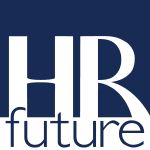Offshore Development Center (ODC) is increasingly adopting AI in HR to optimize workforce efficiency. Using predictive analytics, organizations can forecast talent requirements and optimize recruitment processes. AI also facilitates HR digital transformation, enhancing the manner in which companies manage recruitment and employees. Furthermore, AI-powered chatbots and virtual assistants are automating HR-related questions, alleviating administrative workloads, and enhancing employee experience.
Enhancing Talent Acquisition with AI
AI-Based Recruitment Strategies
With AI-based recruitment, ODCs can search huge resume databases and compare the candidates on fit for skills. Competencies are quantified by machine learning algorithms and can estimate candidates’ success rates so that better recruitment decisions are made. AI-ATS improves resume screening more effectively and reduces time-to-hire and delivers an improved hiring experience. Additionally, AI-driven solutions can predict the best fit for the job, thus the hiring process is more accurate. It improves the possibility of long-term job satisfaction by employees and team productivity.
Workforce Management and Optimization
Employers can optimize the deployment of resources using AI-based workforce optimization. AI examines employee workload and provides data-driven insights that are used in HR decision-making. Predictive workforce analytics can also be used to make it possible for HR departments to predict workforce deficits and prepare reskilling or upskilling accordingly. Through the analysis of employee performance trends by AI, companies are also able to identify trends that can signal upcoming issues such as burnout or skill gaps before they impact productivity negatively. This proactive style of early intervention keeps companies proactive and responsive rather than reactive when it comes to managing the workforce.
The Role of Data Analysis in HR Processes
Using HR Analytics for Informed Decision Making
Using sophisticated HR analytics, ODCs can monitor key HR metrics like productivity, engagement, and turnover rates. With this information, organizations can refine their HR policies and achieve long-term goals. AI-based sentiment analysis technology also facilitates the measurement of the employees’ happiness level, and active HR intervention becomes possible. Employee turnover prediction and identification of retention rate drivers are just a few of the ways that analytics can help HR managers prioritize areas for improvement, drive satisfaction and retention across the organization. Data-driven decision-making supplants antiquated HR processes.
Predictive Analytics in Employee Performance
Predictive analytics enables HR departments to quantify employee performance based on historical data. This process can pick out top performers and those in need of training, enabling continuous improvement. AI-driven performance assessments also eliminate bias, ensuring that judgments are objective and equitable pay models. Predictive models enable companies to tailor employee development plans according to individual needs, such that learning becomes more meaningful and customized. Employees would tend to stay motivated and perform better with time because of this.
Fostering Employee Engagement with AI and Data
Real-Time Insights Based on Data for HR Decision-Making
AI provides real-time data insights, allowing HR managers to make proactive decisions. The insights help in developing retention plans that drive employee engagement. Engagement solutions through AI, such as pulse surveys and analysis of feedback, allow HR teams to measure employee sentiment and react promptly. Through live pattern analysis, HR experts can promptly adjust strategies to respond to emerging issues, thereby maintaining high employee morale. Constant feedback and data exchange keeps businesses in tune with the wishes of their employees.
Enhancing Employee Performance Monitoring
ODCs use employee performance monitoring tools to monitor productivity patterns. Data-driven decision-making facilitates constant development and high-value output. Gamification and AI-powered LMS keep evolving engagement through tailor-made training channels for staff members. Workers are in a position to track individual progress, a sense of responsibility in the progress process. AI integration in the LMS gets more embedded over time, the more customized training will equip the workers to focus on improving areas and becoming productive in the role while ensuring that the labor pool remains relevant in terms of what the business demands.
Surmounting HR Data Privacy and Security Challenges
Data Protection in HR Activities
Data protection in HR is right at the top of priorities. Encryption and controlled access are implemented by ODCs to protect sensitive employee information. Multi-factor authentication (MFA) and blockchain-based identity verification advance security measures to a different level altogether. These security practices do not only protect sensitive information, but employees are also assured of their personal data security. With the help of AI systems in real-time monitoring and sensing vulnerabilities, organizations are able to quickly respond to likely threats, making a secure HR environment even stronger.
Compliance with Global HR Regulations
With the use of AI-based compliance screening, organizations stay in line with labor laws and HR data privacy laws, minimizing the consequences of data breaches. AI-based compliance monitoring also avoids companies falling behind on regulatory changes, thereby not incurring non-compliance charges. AI applications can further monitor global legal mandates to ensure that organizations comply in jurisdictions. This enables ODCs to have a good reputation in their respective industries by following the highest levels of privacy and security.
Conclusion
ODCs are transforming HR management with AI for HR and big data for HR. With the automation of HR, organizations maximize talent acquisition, employee engagement, and performance management while ensuring HR data privacy. As technology is getting better year by year, AI-based HR solutions will continue to enhance workforce efficiency and business growth. By leveraging AI and data analytics, ODCs help organizations create more flexible, data-based, and people-oriented HR spaces to thrive in the long run in the ever-evolving digital age. As future HR processes are more data-driven and mechanized, ODCs will be in the vanguard to create streamlined, productive, and secure workplaces for companies and workers.
Guest writer


























